The following article is reprinted from THE NATIONAL LAW REVIEW
In the early hours of March 14, the U.S. House of Representatives passed the Families First Coronavirus Response Act (H.R. 6201). The bill now heads to the Senate, where it is scheduled to be taken up on March 16 and expected to pass with few revisions. President Trump has publicly expressed support for the bill. In addition to various public health provisions, the bill includes many provisions that will directly impact employers. A summary of these provisions follows, although please note that the Act has not yet been finalized, and the enacted law may vary from the outline below.
Emergency Family and Medical Leave Expansion Act
-
Which employers are covered? The bill significantly expands – on a temporary basis – the number of employers subject to the FMLA who must provide job-protected leave to employees for a COVID-19-designated reason. The bill covers any employer with fewer than 500 employees, although the bill also gives the Secretary of Labor the authority to issue regulations to exempt some small businesses with fewer than 50 employees and to exclude certain health care providers and emergency responders. The bill also covers government employers.
-
Eligibility for emergency leave: Any individual employed by the covered employer for at least 30 days before the first day of leave.
-
Benefits provided: Employee may take up to 12 weeks of paid, job-protected leave if the employee: (1) is complying with a requirement or recommendation to quarantine due to coronavirus exposure or symptoms, and cannot work from home; (2) is caring for an at-risk family member who is quarantining; or (3) is caring for the employee’s child if the child’s school or place of care has been closed due to public health emergency. However, the first 14 days of the leave may be unpaid. Employees may choose to use any accrued paid time off, including vacation and sick leave, to cover the initial 14-day period, but employers may not require them to do so. After the 14-day period, the employer must pay full-time employees not less than two-thirds of the employee’s regular rate for the number of hours the employee would otherwise normally be scheduled. For salaried employees, employers must pay two-thirds of the base salary for the weeks remaining after the initial 14-day period.
-
Expanded definition. The bill also expands the definition of parent and family member to include certain in-laws and domestic partners, grandparents, grandchildren and others.
-
Effective date and expiration. These expanded provisions will become effective within 15 days of enactment and remain in effect until December 31, 2020.
Emergency Paid Sick Leave Act
-
Which employers are covered? All employers with fewer than 500 employees and government employers.
-
Eligibility for paid sick leave: All employees, regardless of his or her duration of employment prior to leave. The benefit is available for the following uses: (1) to self-isolate because the employee has been diagnosed with coronavirus; (2) to seek a diagnosis or preventative care for coronavirus because the employee is exhibiting symptoms; (3) to care for a family member who is quarantining due to a diagnosis, exhibiting symptoms or needs to seek medical care; or (4) to care for a child whose school has closed or whose child care provider is unavailable due to the coronavirus.
-
Benefits provided: Upon the declaration of a public health emergency, including the current coronavirus pandemic, an employer must provide an employee with 80 hours of paid sick leave at the employee’s regular rate of pay, or two-thirds of the employee’s regular rate to care for a child whose school or daycare has closed due to a public health emergency or to care for a family member who is quarantining due to medical recommendation, has a coronavirus diagnosis or is exhibiting symptoms. Part-time employees are entitled to the typical number of hours that they work in a typical two-week period. While we will continue to monitor the final legislation for guidance, it may be that employees can elect to use their 80 hours of paid sick leave during their initial 14-day unpaid leave under the Emergency Family and Medical Leave Expansion Act described above.
-
Calculating for irregular schedules. Employees who work an irregular schedule are entitled to be paid based on the average number of hours the employee worked for the six months prior to taking paid sick leave.
-
Notice. Employers must post a notice informing employees of their rights to emergency paid sick leave.
-
Coordination with existing policies. The emergency paid sick leave provided by this bill is in addition to any sick leave made available to employees under the employer’s existing policies. An employer may not change its current paid leave policy after enactment to avoid this provision.
-
Effective date and expiration. This provision will take effect no later than 15 days after enactment and will expire on December 31, 2020.
Tax Credits for Paid Sick and Expanded Family and Medical Leave
-
The bill provides a series of refundable tax credits for employers who are required to provide the Emergency Paid Sick Leave and the Emergency Paid Family and Medical Leave described above. Subject to certain caps, employers may be able to recover 100 percent of qualified sick leave wages and 100 percent of qualified family leave wages.

